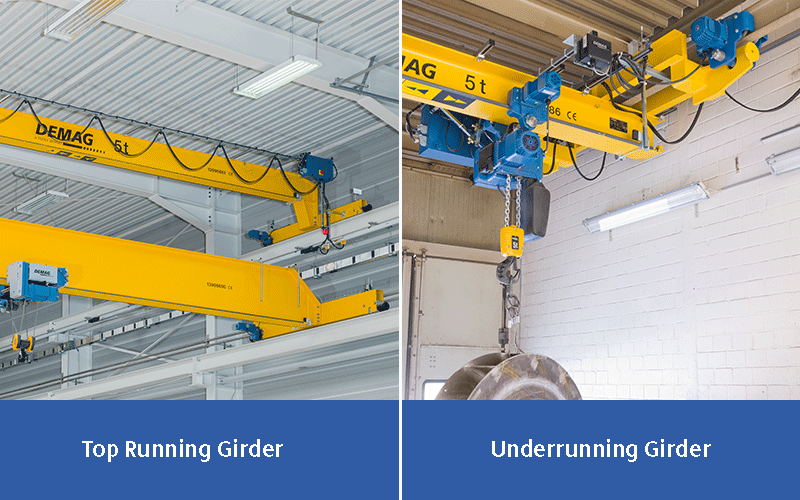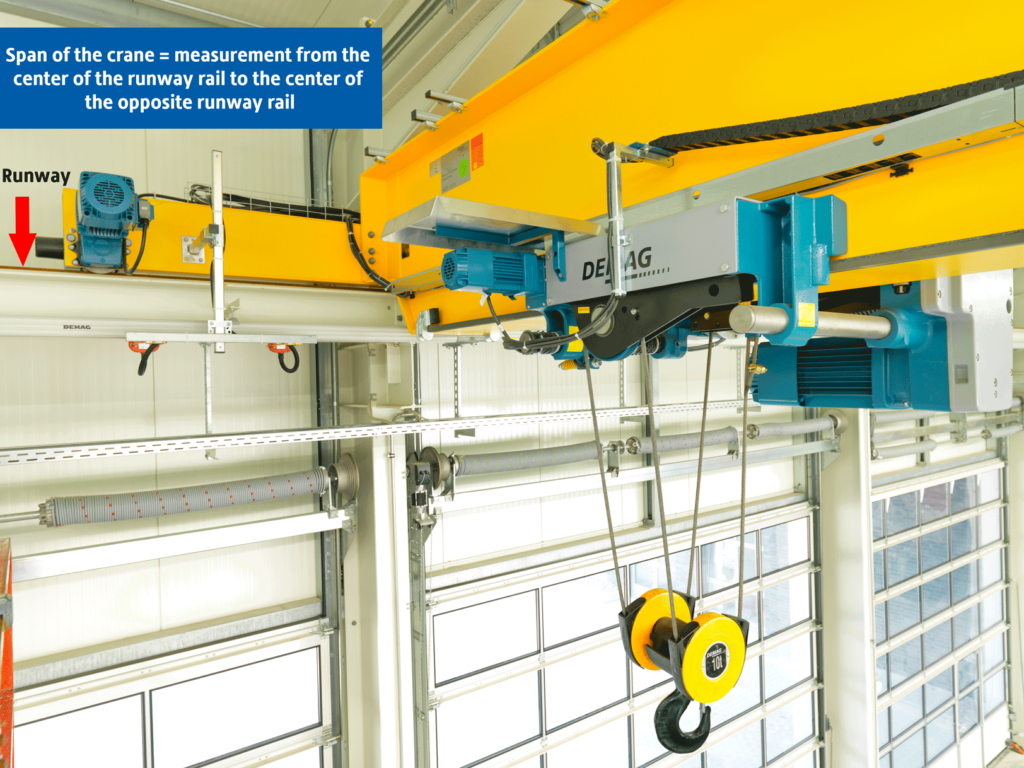Whether you’re replacing an existing crane or installing a new one, knowing some basics will make getting a request for quote (RFQ) a lot easier. If you are a buyer or purchasing agent without the exact technical knowledge, it can be a daunting task to get a crane project quoted. Sometimes you don’t know where to start and sometimes you don’t have the information needed to talk to a dealer or manufacturer.
Here, we will give you an overview of what to expect when you are starting a request for quote on your next crane project.
1. Description of what you are lifting or a description of the application
An essential component of a crane quote usually begins with a description of what you’re lifting. It can help determine what type of system is recommended. Some industries have specific processes or requirements for lifting, which is why having this piece of information is indispensable to the crane dealer or manufacturer.
2. Location of the crane
This is an important detail, because if the overhead crane will be installed outdoors there is more to consider. Not only do you need to account for wind and weather, but the design must include covers to protect the hoist and motor when it is not in use.
3. Girder and Trolley Needs

Generally, a single girder crane lifts lower capacities, while double girder cranes are commissioned for heavier loads— normally 15 tons and up. This is why a crane dealer or manufacturer will design the crane to perform best for your particular needs.
When deciding on the type of crane, building design can drive whether the crane needs a top or underrunning endtruck. If you’re replacing a crane, it’s easy to see which type you need. For new cranes, the primary factor in this decision will depend on the design of your building. Often, you’ll see top-running cranes on runways that are sitting on columns mounted to the walls of the building. Under-running cranes are used on cranes with runways suspended from the ceiling, for example, when a crane is placed in the middle of a building.
4. Capacity of the crane
Knowing how much weight the crane will lift matters for many reasons. The biggest reason is safety. A crane lifting more than it is designed for is hazardous to your workers and increases the stress and maintenance to the crane and building superstructure. You want to ensure the crane will be able to lift enough weight for what you’re doing today and in the future. Listen to the dealer or manufacturer, as they will be your greatest resource and partner when purchasing a crane.
5. Duty requirements of the crane
The CMAA (Crane Manufacturers Association of America) has a listing for crane duty classification. This classification defines how much the crane is used and allows the dealer or manufacturer to quote the best equipment for the job. Duty classes are labelled A through F and ranges from standby/infrequent service to continuous severe service. Generally, when no other duty requirement is indicated, class C is frequently quoted. This detail will be discussed further by the dealer or manufacturer as your quote is being developed.
6. Length of the Span

The span of a crane is the distance across the runway or the pieces that the bridge runs on. The bridge runs across the runway. Measuring the span of the crane is a crucial part of the RFQ process. When you initially begin a request for quote, your own measuring will be sufficient. Once you go deeper into the quoting process, a manufacturer or dealer will schedule a site visit to finalize the quote.
7. Speed requirements
Each crane manufacturer has different standard speeds for lifting a load. Generally, you should indicate whether you require two speed or variable speed lifting. Unless you have specific needs to discuss with a dealer or manufacturer, indicating what type of speed (two speed or variable speed) will be your starting point.
8.Voltage requirements
Voltage requirements vary by your location. There are 3 main voltages used in North America—230 volt, 3 phase, 60 hertz; 460 volt, 3 phase, 60 hertz; and 575 volt, 3 phase, 60 hertz. Knowing the electrical requirement for the project is necessary. Following CSA electrical standards are required in Canada. These standards are also followed throughout North America.
What to Expect After You Submit a Request for Quote
Once you have submitted your request for quote, this will lead to a further conversation with the dealer or manufacturer. Sometimes this conversation happens during a site visit, where a representative comes out to see the site and take final measurements, or it can happen over the phone.
There are many benefits to having a site visit for a crane project. First, the person on site can see your facility and your process to make the best recommendations for your project. This gives them a firsthand look at your processes and environment, and even the opportunity to talk through how a crane can improve your workflow. A site visit also allows you to ask questions and have a face-to-face conversation about the application of the crane.
During this visit you will be able to talk in more detail about the load. You can discuss the duty requirements in more detail, zeroing in further on what crane duty classification fits your requirements best, including details like the number of lifts per hour at full and varying capacities. You will talk about the hook coverage, assuring the hook will reach the entire floor area where loads are lifted. You may talk about the runway type and length to find the optimal lift speed, and wheel loading requirements so you can appropriately lift and move the load you want to pick up. Your dealer or manufacturer representative will also talk to you about what type of hoist will work best for your crane application. Generally, a chain hoist is appropriate for lifting loads up to two tons, while wire rope hoists are more robust and appropriate for loads over two tons.
Even if you are not a technical expert on cranes, providing yourself with some basic information when requesting a quote will make the process easier and allow you to have a more robust conversation when the real experts step in and help you finalize the quote.
Doing more research on what’s needed for an overhead crane quote? Read more about lift height, c-dimension and headroom.
